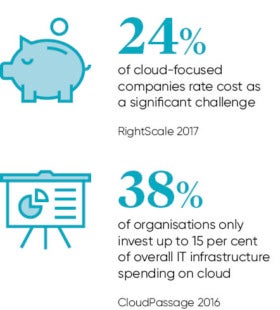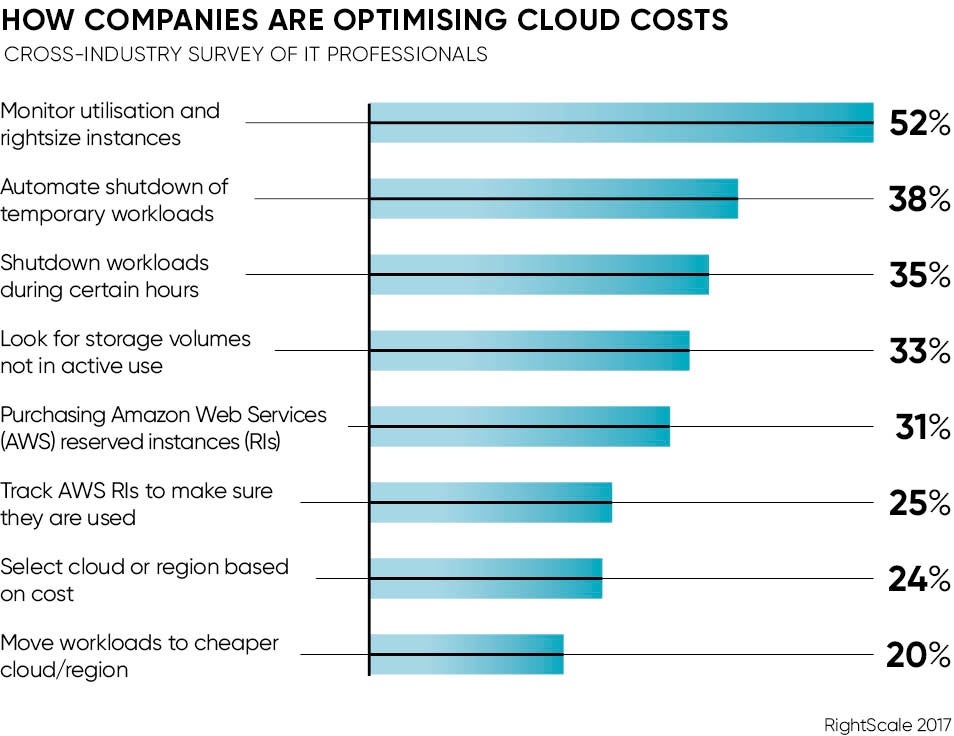 While most of the executives in the C-suite are now convinced of the wider technical and operational worth of cloud computing, the chief financial officer isn’t quite as content.
While most of the executives in the C-suite are now convinced of the wider technical and operational worth of cloud computing, the chief financial officer isn’t quite as content.
Uncontrolled adoption of the cloud model often sees entire departments starting to spin up clouds for what end up being incongruent disconnected implementations bought very typically from different cloud vendors. This is the unpleasant reality of so-called cloud sprawl.
In cloud sprawl, business units lazily select instances of cloud without mapping them accurately enough to the real amount of computing, data analytics and storage power they really need. Cloud is flexible, inherently so, but the right level of purchase must be made at the point of sale.
Cloud sprawl is not just wasteful in initial monetary terms, it can also result in the development of inconsistent or non-interoperable datasets where one side of the business can’t understand the other side’s data.
In this world of multi-cloud environments where some clouds are private on-premises, some are public residing in a data centre and some are a hybrid combination of the two, how on Earth do you not get sprawled?
Don’t panic quite yet. It’s not quite a case of place your bets, buy some cloud and hope it’s enough to not get stung for outstepping the service level agreement (SLA). A growing number of firms are moving into the cloud services management space to provide monitoring tools and the level of algorithmic intelligence needed to work out capacity needs.
“Organisations look to cloud for agility and expect cost-savings, but we often hear stories of rampant overspending and ‘sticker shock’ when they actually get their bill,” says Andrew Hillier, co-founder and chief technology officer at Cirba. “It is fundamentally important to buy the right cloud infrastructure. We have found that
most organisations overallocate resources internally and this is very costly if you move into the cloud like for like. Resizing cloud instances to match their workload demands can immediately save as much as 20 per cent off the bill.”
But it’s tough for firms running applications with varying transactional workloads, Mr Hillier concedes. Cirba quite literally makes nothing but cloud infrastructure control software. The firm talks about using cloud effectively like playing a game of Tetris – fit all the blocks, in this case cloud resources, together so they nestle up as snugly as possible.
Hybrid clouds also muddy the cloud-costing waters because they mix on-premises and public cloud platforms, which come with different economic models. It’s like comparing apples with oranges while at the same time buying the apples by the pound and oranges in kilos. Products like the Nutanix Enterprise Cloud attempt to solve this problem by replicating public cloud platforms, such as Amazon’s AWS, in a private data centre. It does this by employing similar technologies for integration and load balancing, and similar economics too.

So is cloud costing ever simple?
Wael Elrifai suggests it can be, in his role as director of enterprise solutions at data integration and analytics company Pentaho. “If your computational workload is generally consistent throughout the day, it’s pretty straightforward – just compare the cost per terabyte of your chosen cloud provider and the cost of running your own data centre,” he says.
Mr Elrifai recommends keeping lower-cost operations away from cloud, but when they are more expensive and cloud could be a saving, then see which data and workloads can be off site only after doing a security and legal audit. But would that it were always that simple.
Organisations look to cloud for agility and expect cost-savings, but we often hear stories of rampant overspending
“On the other hand, if your computational workloads vary dramatically throughout the day, spiking to meet SLAs at peak times and troughing at other times, then you need to apply a more complex formula to make the optimal decision,” says Mr Elrifai.
Is cloud purchasing going to get easier any time soon?
Not necessarily, according to firms like cloud control specialist Comparex, pointing out that the number of cloud consumption and payment models on offer continues to grow, adding further complexity to cloud management.
Steve Denby, head of solution sales at Derby-based Node4, a firm specialising in managed hosting and data storage services, says: “It’s important to remember that cloud pricing is based on computing workload, together with associated licensing and storage costs. Functionality such as disaster recovery, backup and security options all add additional cost,” he says.
The reality is that cloud computing is a melting pot of ingredients. That pot is defined by different applications on different clouds with different service agreements enjoying different amounts of storage capacity over different input and output ratings on different data memory rankings split out over different levels of mission-criticality and security. Understanding this recipe and coming up with a fixed-price menu was never going to be simple.
